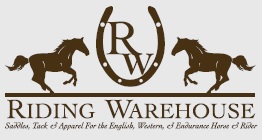This photo by Erin McCardell from Hilltop Farm is about the most stunning inspection photo I've ever seen. This young filly is Bellatesse by Bugatti Hilltop, bred by Hilltop and purchased by Kris Schuler, a breeder here in PA. She bought her at 5 weeks. Bellatesse, now a yearling, will be at Devon, and I'll be front and center to see her in person.
 Below is a recent photo of Bellatasse at a yearling, taken at the 2010 Fair Hill Breed show (again, courtesy of Erin McCardell). Note that Belatasse has an unusual swirly coat that makes her even more distinctive. The swirls are called watermarks and there is a discussion on an equestrian listserv about the presence of watermarks in G-line horses. Sara Andrew left a comment that I'll repeat it here: watermarks are common on Friesians as well.
Below is a recent photo of Bellatasse at a yearling, taken at the 2010 Fair Hill Breed show (again, courtesy of Erin McCardell). Note that Belatasse has an unusual swirly coat that makes her even more distinctive. The swirls are called watermarks and there is a discussion on an equestrian listserv about the presence of watermarks in G-line horses. Sara Andrew left a comment that I'll repeat it here: watermarks are common on Friesians as well.Again with the brick-bat: It's about the mare!
This filly illustrates an important point of breeding that everyone seems to know but few seem to practice. I'm no breeding expert, yet I know this. How can so many breeders not know this?
The mare is the most important choice you make as a breeder.
It makes me dismayed and sad to hear breeders talk about getting broodmares on CANTER or from rescues. Many breeding programs consist of a dozen mediocre mares rather than one or two really exceptional mares. My hat goes off to the breeders who break the bank to get really terrific mares and build their breeding program on a solid foundation.
See ya at Devon, Bella!






















